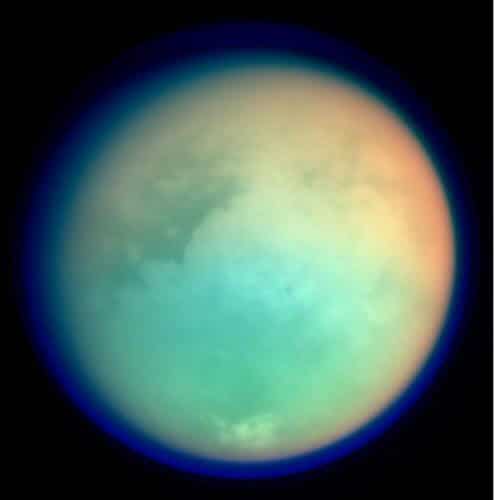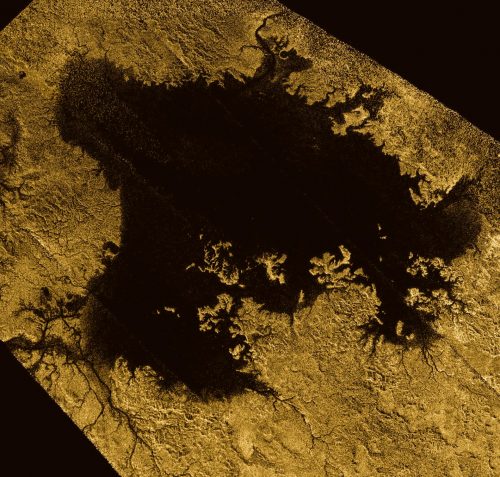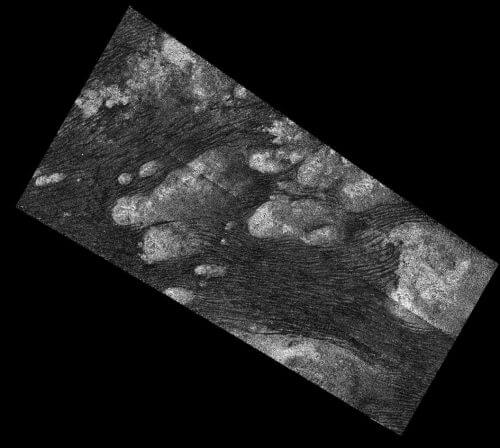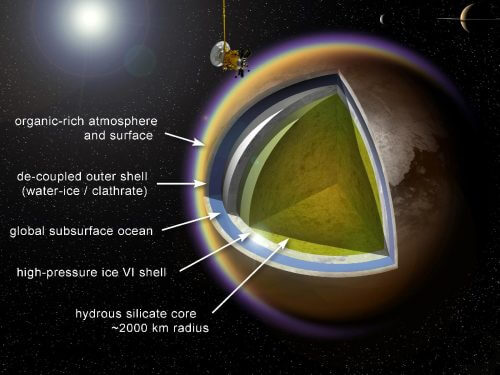New findings from the study of Saturn's largest moon - Titan, part two

Mountains
The mountainous region Mithrim Montes reaches a height of 3.337 km. The fact that Titan has high mountains raises the possibility that there is tectonic activity on it that can affect the surface. This tectonics is related to the rotation of Titan around itself, tidal forces of Saturn or the cooling of the crust (1). in photography PIA20709 You see a long ridge line with jagged peaks that were probably formed by the erosion of methane rain. Some of the jagged peaks reach a height of 800 meters above the valley floor where the ridge is located. The slope on the left side of the ridge is gentler than on the right side. On Earth, mountains of this type are cracked and formed following an upward push from the crust (2).
Malls
The Xsini spacecraft discovered a network of canyons flooded with liquid methane in the North Pole. These received the name - Vid Flumina. This is a network of 8 malls that are more than 400 km long. These are narrow canyons, the width of each of them is less than 800 meters, their depth is 570-240 meters and their slope angle is 40 degrees. The formation of these canyons took a long time in geological terms, how long is unknown. They are similar in shape to the canyons of the Colorado River, Arizona USA. They all flow into the sea Ligeia Mare (see footnotes 3,4).

dunes
In photo PIA20710 hundreds of dunes are visible around the mountains and you can learn from them about the direction of the winds (5). The dunes are not made of silicates like on Earth, but of granular hydrocarbons that formed in the atmosphere and reached the ground as rain. They rise to a height of 91 meters and their movement is affected by obstacles that appear in their path (6).

Days
From observations made between 2015 - 2007 it became clear that the largest sea Ligeia Mare is full of liquid methane and not ethane (Ethene) as they thought. What is the reason for this - unknown. It could be that the source is natural methane or that whatever is removing the ethane above it. and that it flows into the nearby sea - Kraken Sea. It turned out that at the bottom of the sea, which is 160 meters deep, there is mud of organic matter (7). As a side note, there must be a terrible stench in this place. It is not recommended to smell.
Internal structure
It is estimated that the ice crust sits on a deep water ocean that probably acts like the Earth's upper mantle - a hot, high-pressure layer of rock. The ability to flow slowly and undergo deformations over time at great depths. Titan's water ice layer is softer than Earth's rocks. For this reason it is estimated that the mountains on Titan cannot rise to a height of 9 km as on Earth (1).

Sources
- PIA20023: Radar view of Titan's tallest mountains
- PIA20709: Ridge of jagged peaks of Titan
- Brooks Hayes, “Cassini discovers flooded canyons on Titan”, January 10.8.2016, XNUMX
- "Methane filled canyons line Titan's surface", 12.8.2016"
- PIA20710: Flowing dunes of Shangri-la
- 9.9.2016, "Hanneke Weitering,"Shangri-la” on Saturn moon Titan teeming with sand dunes
- "Profile of a Methane sea in Titan"28.4.2016"
See more on the subject on the science website:
